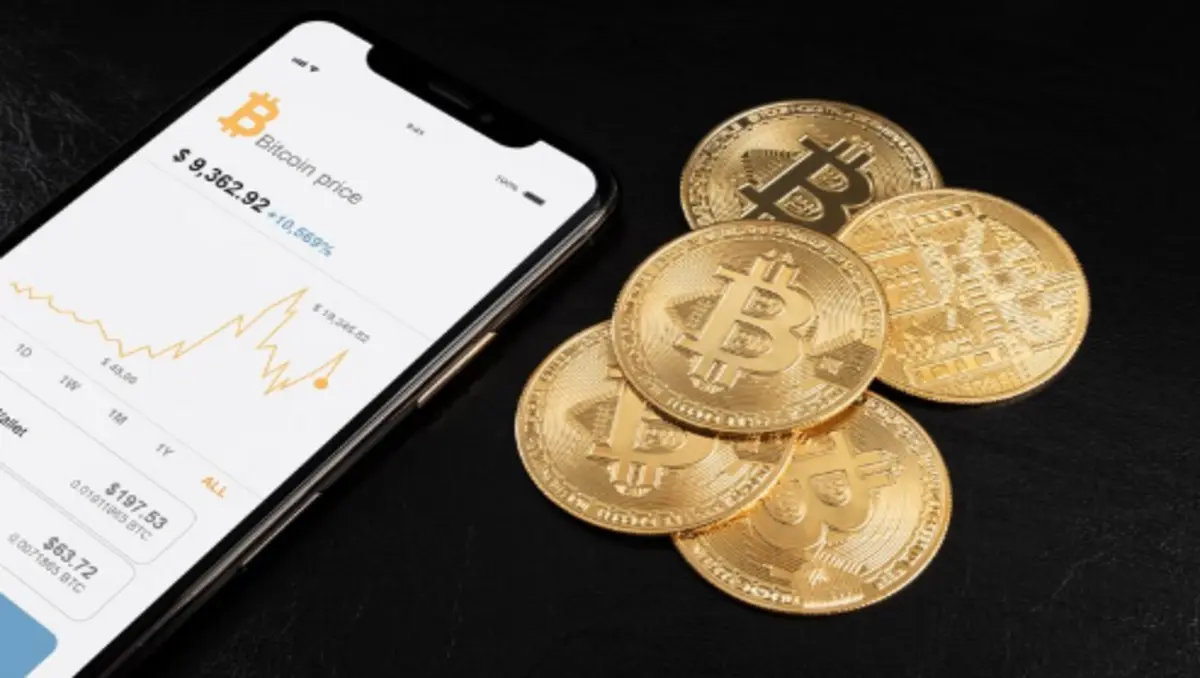In today’s digital age, traditional forms of payment are evolving at a rapid pace, and one of the most notable changes has been the rise of digital currency. Whether you’re already familiar with the concept or just hearing about it for the first time, this post will give you a comprehensive overview of digital currency, how it works, its benefits, and its potential future.
What is Digital Currency?
Digital currency, also known as cryptocurrency, is a type of currency that exists only in digital form. Unlike traditional currencies, such as the dollar or euro, digital currencies don’t have a physical counterpart like coins or banknotes. Instead, they exist as numbers stored on computers. A digital currency transaction takes place purely online, making it faster and sometimes more secure than using traditional currencies.
The most well-known digital currency is Bitcoin, but there are many others, including Ethereum, Litecoin, and Ripple. Each of these currencies operates on different underlying technologies but shares common features like decentralization and the ability to transfer funds across borders quickly.
How Does Digital Currency Work?
Digital currencies are powered by blockchain technology. The blockchain is a decentralized digital ledger that records all transactions made with a particular currency. This ledger is distributed across many computers, ensuring transparency and security. Every time a transaction is made, it’s verified by multiple computers in the network before being added to the blockchain.
Let’s break it down a bit further. When you send digital currency, say Bitcoin, to someone, that transaction is encrypted and added to the blockchain. Once confirmed, it becomes a permanent part of the blockchain’s history. This verification process eliminates the need for middlemen, such as banks, to verify and authorize transactions.
The blockchain serves as the backbone of most digital currencies. It ensures that transactions are secure, transparent, and irreversible once confirmed, making it a popular choice for a wide range of users.
Types of Digital Currency
While Bitcoin is the most famous example, there are several different types of digital currencies. Each has its unique features and use cases. Here’s a quick look at some of the most popular digital currencies.
1. Bitcoin (BTC)
Bitcoin is the first and most well-known cryptocurrency. It was created in 2009 by an anonymous person or group known as Satoshi Nakamoto. Bitcoin operates on a decentralized network, meaning there is no central authority, like a bank or government, controlling it. It’s often referred to as “digital gold” because of its store-of-value properties.
2. Ethereum (ETH)
Ethereum is more than just a cryptocurrency. It is a decentralized platform that allows developers to create and deploy smart contracts and decentralized applications (DApps). Ether (ETH) is the currency used to power the Ethereum network, but the real potential of Ethereum lies in its ability to support smart contracts, which execute automatically when certain conditions are met.
3. Litecoin (LTC)
Created by Charlie Lee in 2011, Litecoin is often called the “silver” to Bitcoin’s “gold.” It operates on a similar model to Bitcoin but offers faster transaction times and a different hashing algorithm.
4. Ripple (XRP)
Ripple is both a platform and a digital currency. It’s designed to facilitate international money transfers, offering lower fees and faster transaction speeds than traditional banking methods. XRP, Ripple’s native currency, acts as a bridge between different fiat currencies, enabling real-time payments across borders.
5. Stablecoins
Stablecoins are cryptocurrencies pegged to a stable asset, such as the US dollar or gold. The most well-known stablecoin is Tether (USDT), which is pegged to the US dollar. Stablecoins aim to provide the benefits of digital currency while minimizing the volatility typically associated with cryptocurrencies like Bitcoin and Ethereum.

Advantages of Digital Currency
Digital currencies offer a variety of advantages over traditional payment methods. Here are some of the key benefits:
1. Decentralization and Control
Most digital currencies, especially cryptocurrencies like Bitcoin and Ethereum, are decentralized. This means that no central authority, such as a government or bank, has control over them. Users have full control over their funds, and transactions are often faster and cheaper than traditional banking systems.
2. Low Transaction Fees
Traditional payment methods often involve intermediaries, such as banks or credit card companies, which charge transaction fees. Digital currencies, on the other hand, tend to have lower fees, especially for international transfers. This makes them a cost-effective option for individuals and businesses.
3. Security and Transparency
Digital currencies are built on blockchain technology, which ensures that all transactions are transparent and immutable once confirmed. The decentralized nature of blockchain means that no single entity can alter transaction history. This level of security is one reason why many people trust digital currencies for both personal and business transactions.
4. Speed and Accessibility
Traditional bank transfers, especially international ones, can take days to process. With digital currencies, transactions can be completed within minutes or even seconds, depending on the network. Additionally, anyone with an internet connection can participate in the digital currency market, providing financial inclusion to people in underserved areas.
5. Privacy
While digital currency transactions are recorded on the blockchain, many cryptocurrencies offer a certain level of anonymity. Users are identified by their wallet addresses rather than personal information, allowing for greater privacy than traditional banking systems.
The Future of Digital Currency
The future of digital currency is promising, with many experts predicting that it will play a significant role in the future of finance. Here are some potential trends to keep an eye on:
1. Central Bank Digital Currencies (CBDCs)
Several countries are exploring the idea of creating their own digital currencies, known as central bank digital currencies (CBDCs). Unlike decentralized cryptocurrencies, CBDCs would be controlled by a central authority, such as a national government or central bank. China has already launched its digital yuan, and other countries, including the United States and the European Union, are conducting trials and studies on CBDCs.
2. Increased Adoption by Businesses
More businesses are beginning to accept digital currencies as a form of payment. This trend is expected to grow as consumers become more familiar with digital currencies and as regulatory clarity improves. Big companies, including Tesla and PayPal, have already shown interest in adopting cryptocurrencies, which may signal a broader shift in how we think about money.
3. Blockchain Beyond Currency
While digital currencies are the most well-known use of blockchain technology, blockchain has many other applications. From supply chain management to voting systems, blockchain’s potential goes far beyond currency. As the technology matures, we can expect to see new, innovative use cases that go beyond digital payments.
4. Regulation and Security Concerns
As digital currencies become more mainstream, governments around the world will likely implement more regulations to address security concerns, tax issues, and fraud. While this could help stabilize the market and make it more secure for users, it could also introduce new challenges. It will be important to strike a balance between fostering innovation and protecting consumers.
5. Integration with Traditional Financial Systems
In the future, digital currencies could become more integrated with traditional financial systems. We may see increased use of cryptocurrencies for everyday purchases, as well as more partnerships between digital currency platforms and established banks.
How to Get Started with Digital Currency
If you’re interested in getting started with digital currency, here are the basic steps:
1. Choose a Digital Currency
There are many digital currencies available, so take the time to research and decide which one fits your needs. Bitcoin is a good starting point for beginners, but you might also want to explore Ethereum or other altcoins.
2. Create a Wallet
To store and manage your digital currency, you’ll need a digital wallet. There are different types of wallets, including hot wallets (online wallets) and cold wallets (hardware wallets). Choose one that fits your needs in terms of security and accessibility.
3. Choose a Platform to Buy Digital Currency
To purchase digital currency, you’ll need to use a cryptocurrency exchange or trading platform. Popular platforms include Coinbase, Binance, and Kraken. Be sure to choose a reputable platform with good security features.
4. Secure Your Digital Currency
Digital currencies are vulnerable to theft if not properly secured. Use strong passwords, enable two-factor authentication (2FA), and consider using a hardware wallet for additional security.
5. Stay Informed
The world of digital currency is rapidly evolving. Stay informed about new developments, regulations, and market trends to ensure you make the most of your investment.

Conclusion
Digital currency is not just a passing trend but an evolving technology with the potential to transform the way we think about money and payments. From its decentralized nature to its low transaction fees and enhanced security features, digital currency offers many advantages over traditional payment methods. As the world moves toward a more digital future, it’s clear that digital currencies will play an increasingly important role in our financial lives.
read more
https://financekhush.com/income-generation-a-simple-guide-in-2025/
faq’s
1. What is digital currency?
Digital currency refers to any currency that exists in digital form. Unlike traditional currencies, it has no physical counterpart like coins or banknotes. Examples include cryptocurrencies like Bitcoin, Ethereum, and Ripple. These currencies operate on decentralized networks and are powered by blockchain technology.
2. How does digital currency work?
Digital currency works using blockchain technology, a decentralized digital ledger that records all transactions. Transactions are verified by multiple computers in the network, ensuring security and transparency. Once verified, transactions are added to the blockchain, making them permanent and immutable.
3. What are the benefits of using digital currency?
Digital currencies offer numerous advantages, including lower transaction fees, faster processing times, enhanced security, privacy, and the ability to operate without intermediaries like banks. They also allow for global, borderless transactions, making them ideal for international payments.
4. How do I buy digital currency?
To buy digital currency, you need to create an account on a cryptocurrency exchange platform like Coinbase, Binance, or Kraken. After that, you can deposit funds via bank transfer, credit card, or other payment methods, and then purchase your chosen cryptocurrency.
5. Is digital currency safe to use?
Digital currency is generally secure when used properly. Blockchain technology provides a high level of transparency and security. However, you must take precautions such as using strong passwords, enabling two-factor authentication (2FA), and storing your currency in secure wallets to protect against theft.
6. What is a blockchain?
A blockchain is a decentralized, distributed ledger that records transactions across multiple computers. It ensures that every transaction is secure, transparent, and cannot be altered once confirmed. Blockchain is the backbone of most digital currencies and is used for various applications beyond just currency, such as supply chain management and voting systems.
7. What is the difference between Bitcoin and Ethereum?
Bitcoin is primarily used as a store of value and a method of payment, while Ethereum is a decentralized platform that supports smart contracts and decentralized applications (DApps). Bitcoin’s network focuses on peer-to-peer transactions, while Ethereum enables developers to build and deploy decentralized software solutions.
8. What is the future of digital currency?
The future of digital currency is promising, with ongoing developments in blockchain technology, increasing adoption by businesses, and the exploration of Central Bank Digital Currencies (CBDCs) by governments. More people and businesses are embracing digital currencies, and regulatory frameworks are evolving to enhance security and trust in the system.
9. What are stablecoins and how do they work?
Stablecoins are cryptocurrencies that are pegged to the value of a stable asset, such as the US dollar or gold. The goal is to reduce the volatility often seen in cryptocurrencies like Bitcoin. Examples of stablecoins include Tether (USDT) and USD Coin (USDC), which maintain a stable value by being backed by reserves.https://www.youtube.com/
10. How can I store my digital currency securely?
You can store your digital currency in either a hot wallet (online storage) or a cold wallet (offline storage). Cold wallets, such as hardware wallets or paper wallets, are more secure because they are not connected to the internet and are less vulnerable to hacking. For added protection, always use strong passwords, enable two-factor authentication, and backup your wallet information securely.

1 thought on “The Rise of Digital Currency: What You Need to Know in 2025”